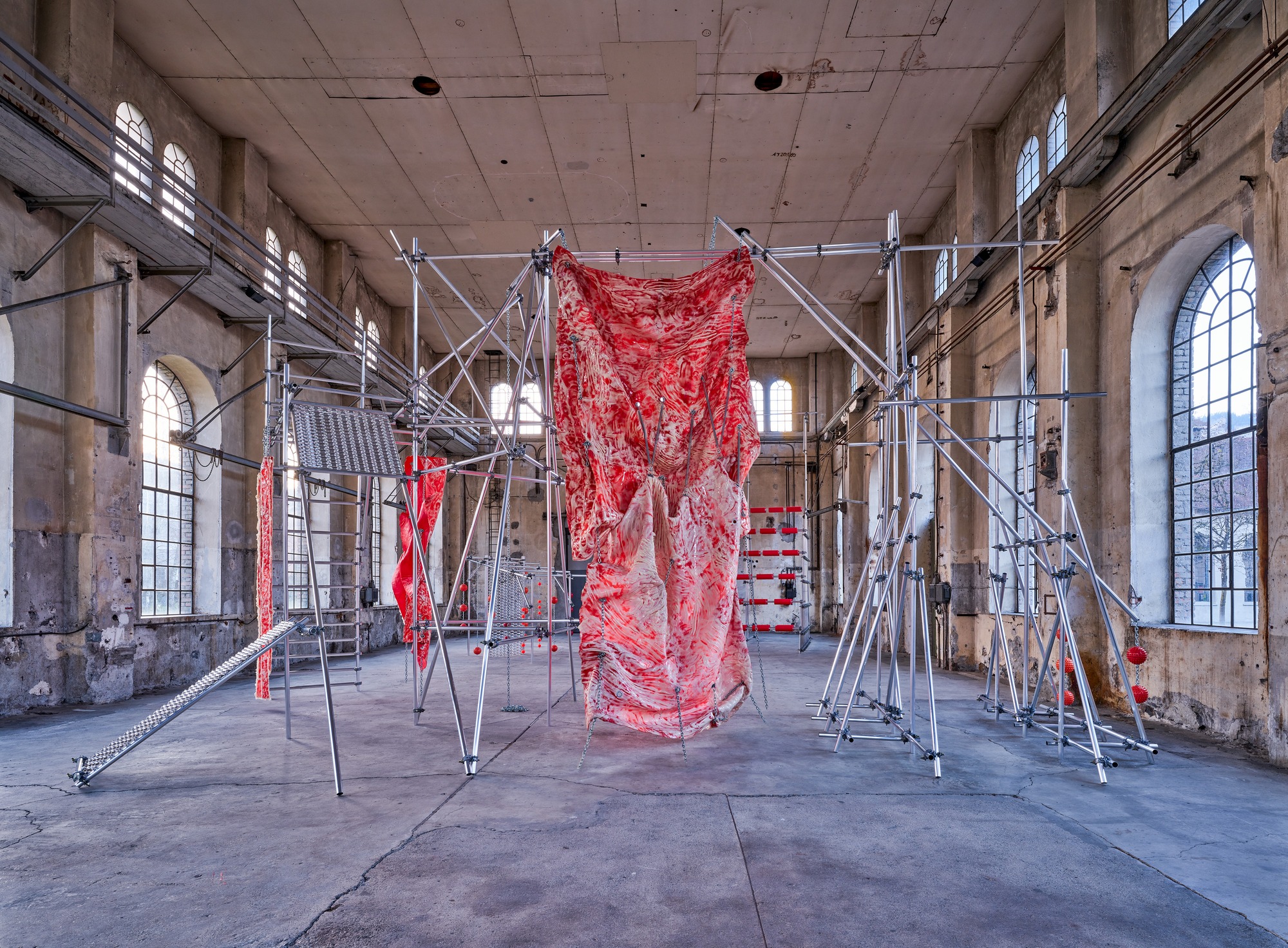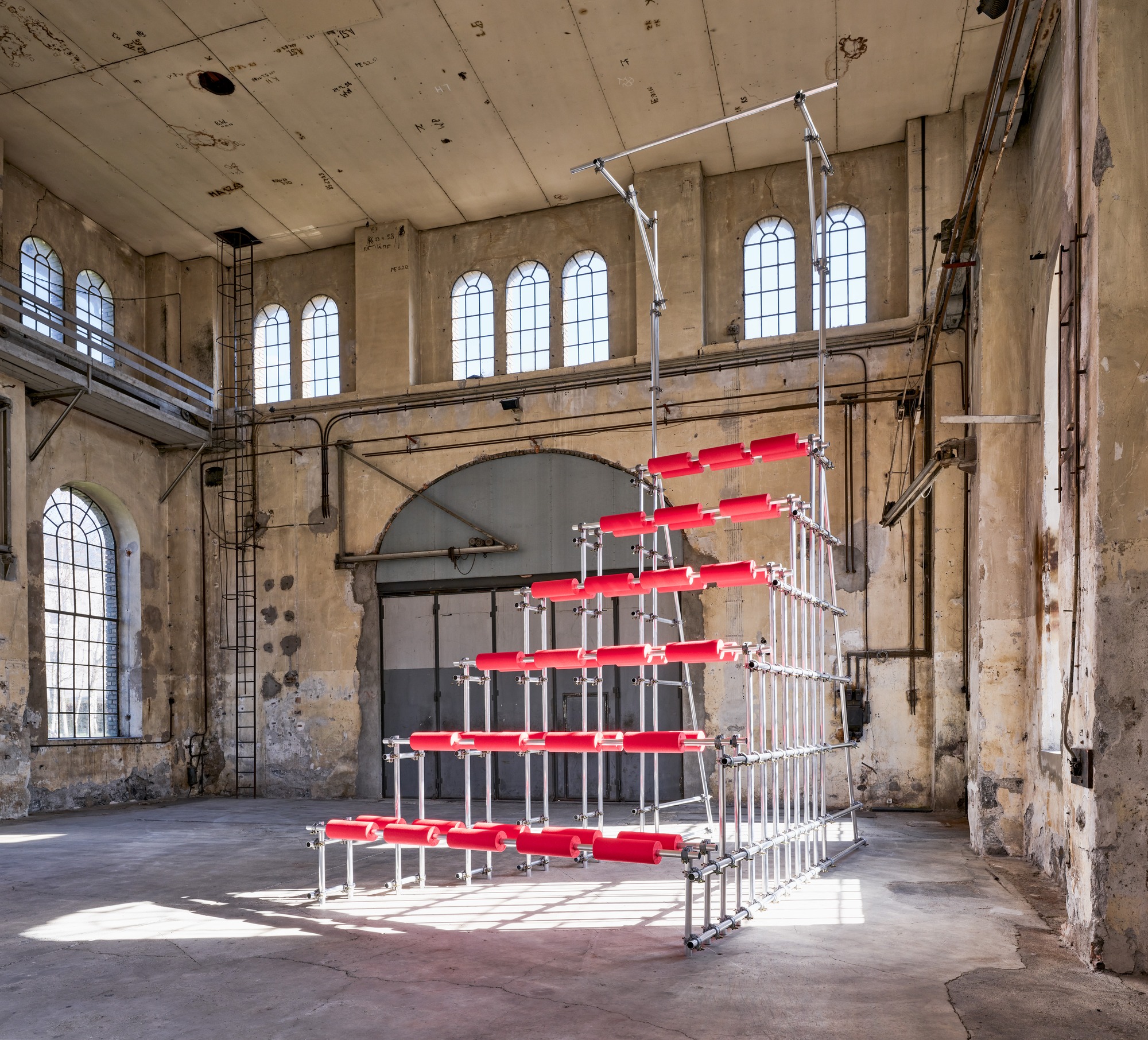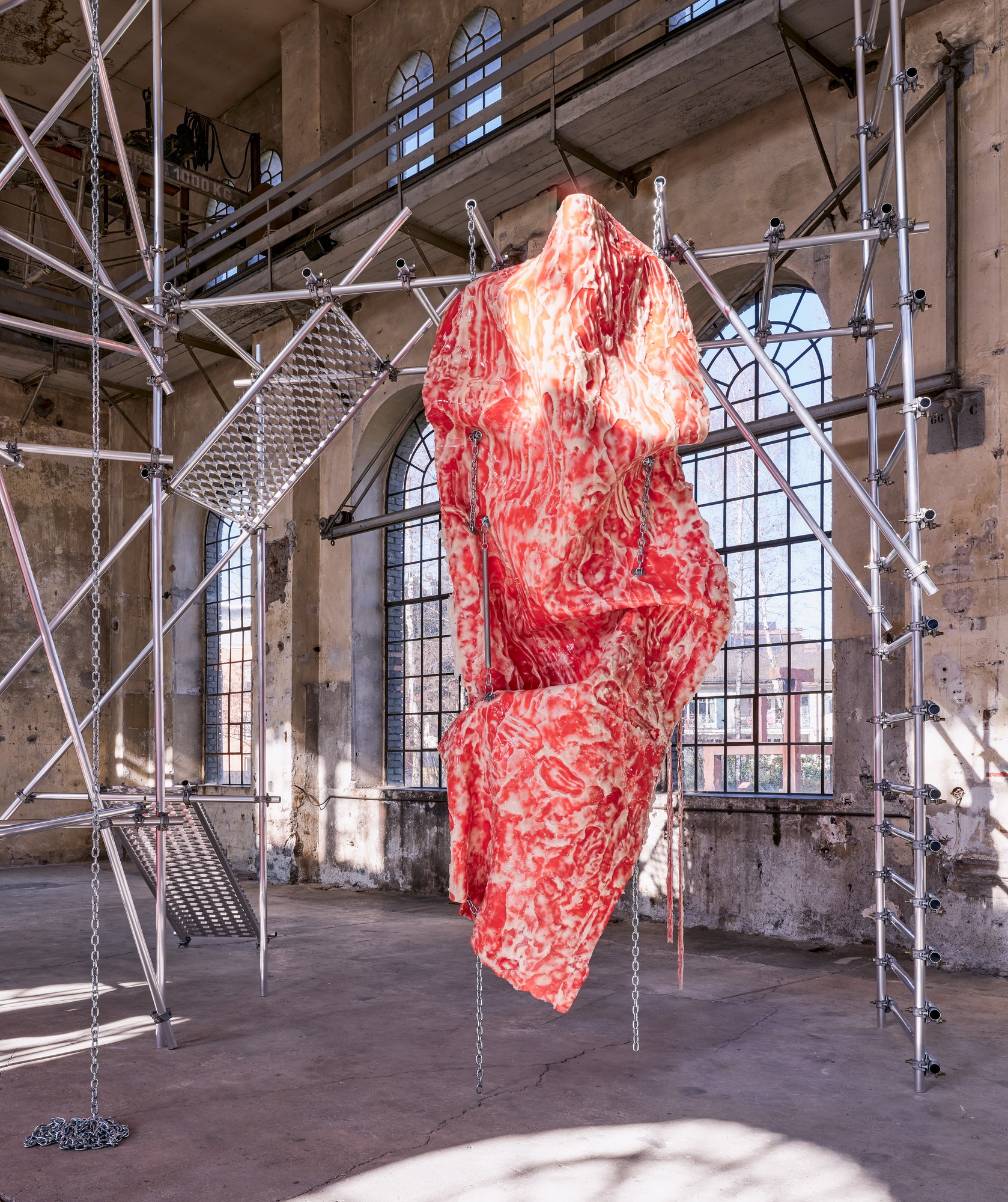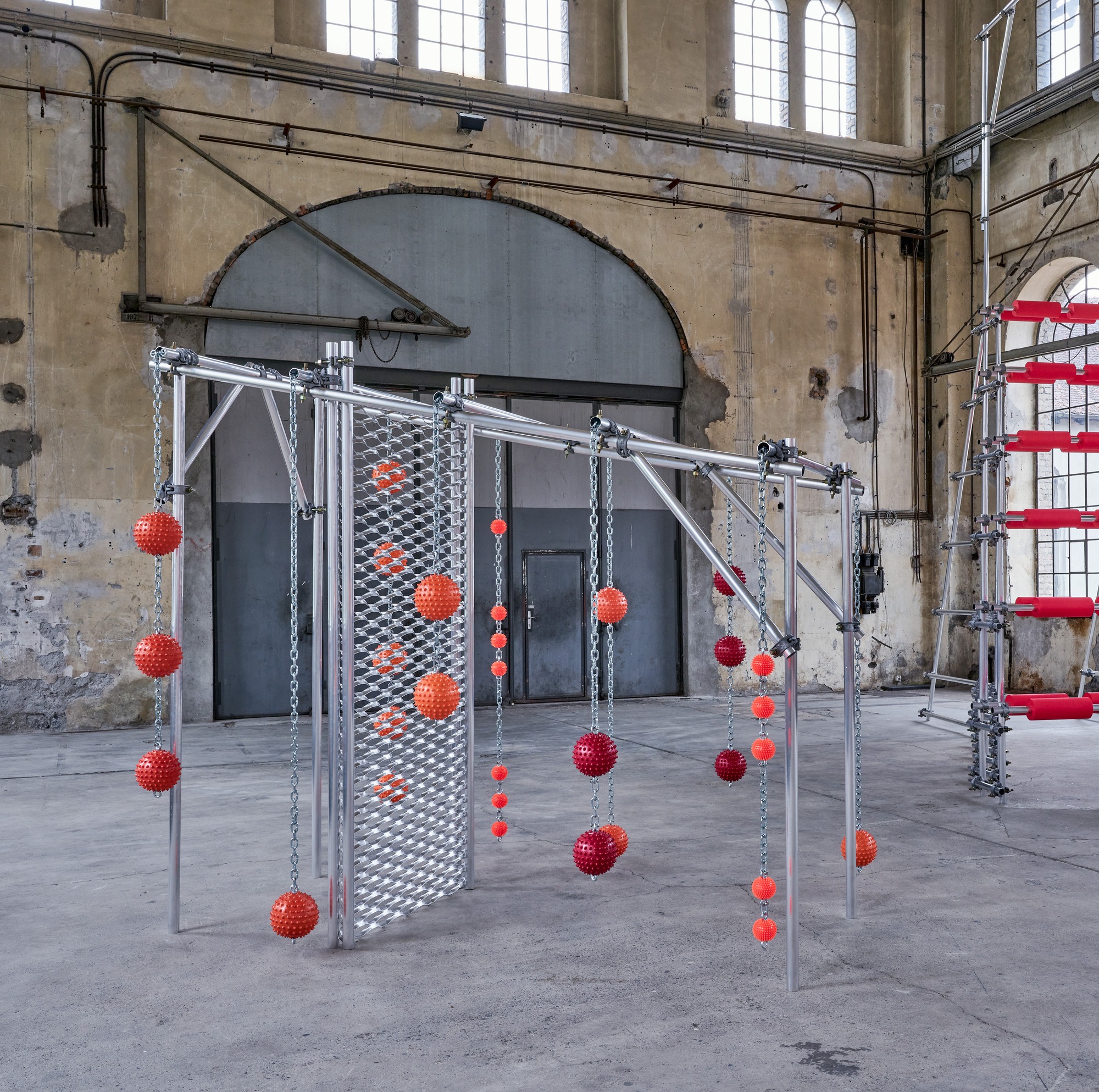Sophie Hirsch
Child's Play
14 Mar - 09 Jun 2025

Sophie Hirsch: “Child’s Play”, Kunstraum Dornbirn 2025, Foto Günter Richard Wett, © Sophie Hirsch/Bildrecht Wien 2025, courtesy der Künstlerin/Galleria Doris Ghetta/Zeller van Almsick.

Sophie Hirsch: “Child’s Play”, Kunstraum Dornbirn 2025, Foto Günter Richard Wett, © Sophie Hirsch/Bildrecht Wien 2025, courtesy der Künstlerin/Galleria Doris Ghetta/Zeller van Almsick.

Sophie Hirsch: “Child’s Play”, Kunstraum Dornbirn 2025, Foto Günter Richard Wett, © Sophie Hirsch/Bildrecht Wien 2025, courtesy der Künstlerin/Galleria Doris Ghetta/Zeller van Almsick.

Sophie Hirsch: “Child’s Play”, Kunstraum Dornbirn 2025, Foto Günter Richard Wett, © Sophie Hirsch/Bildrecht Wien 2025, courtesy der Künstlerin/Galleria Doris Ghetta/Zeller van Almsick.
Sophie Hirsch invites us to an encounter with ourselves at Kunstraum Dornbirn. Entering the former assembly hall, we find ourselves looking into our innermost being. A huge, two-part sculptural image hangs from a height of around six metres. Our first impression is that we are gazing at a close-up of motionless, glued-together fascia or flesh streaked with fat: cream-coloured, shiny silicone, hand-moulded, parasitically connected with a rich red fabric, each part three by four metres. Eyelets puncture the layers at points, providing openings for round steel chains and tension springs. The impression is violent and fascinating at the same time: a range of intimate emotions unfolds – shocking and brutal, beautiful and repulsive, irresistible and attractive.
The exhibition’s title, “Child's Play”, reinforces this individual experience of ambivalence. Hirsch dissects the relationship between psyche and body in an aesthetically appealing way, exposing the inner dissonances of being human as systemic and culturally conditioned, arising from socialisation and, above all, fluid. Her sculptures quote functional mechanisms of bodily experience and self-care. Hirsch finds both a discursive field and quotable forms in the teachings of Joseph Pilates. Hard foam rollers for massaging the fasciae become decorative elements. Massage balls are filled with concrete and counterbalance one another. The loss of their original function reduces them to functioning as quotations. They turn into symbols, counteracted by the sheer carnality of the silicone.
“Child's Play” at Kunstraum Dornbirn marks an important step in Hirsch’s artistic development. For the first time, she explores her characteristic themes beyond the dimensions of wall works, furniture-like objects or installations that can be physically handled by one person. Here she has developed an installation specially conceived for the location, based on modular scaffolding as sculptural material, display, support and room sketch.
The exhibition’s title, “Child's Play”, reinforces this individual experience of ambivalence. Hirsch dissects the relationship between psyche and body in an aesthetically appealing way, exposing the inner dissonances of being human as systemic and culturally conditioned, arising from socialisation and, above all, fluid. Her sculptures quote functional mechanisms of bodily experience and self-care. Hirsch finds both a discursive field and quotable forms in the teachings of Joseph Pilates. Hard foam rollers for massaging the fasciae become decorative elements. Massage balls are filled with concrete and counterbalance one another. The loss of their original function reduces them to functioning as quotations. They turn into symbols, counteracted by the sheer carnality of the silicone.
“Child's Play” at Kunstraum Dornbirn marks an important step in Hirsch’s artistic development. For the first time, she explores her characteristic themes beyond the dimensions of wall works, furniture-like objects or installations that can be physically handled by one person. Here she has developed an installation specially conceived for the location, based on modular scaffolding as sculptural material, display, support and room sketch.
